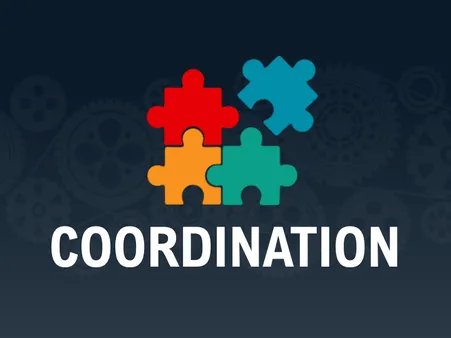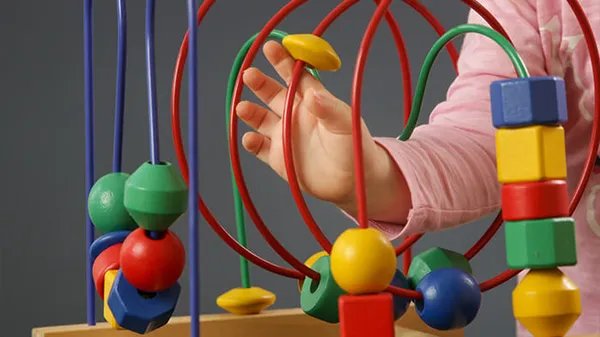Table of Contents
In the realm of digital content creation, Kizworld unveils the art of crafting engaging, beneficial, and easy-to-read masterpieces. Our journey begins with exploring the essence of** coordination**, a cornerstone of effective communication. Join us as we delve into the intricacies of clarity, structure, storytelling, and visual appeal, unlocking the secrets to content that captivates and inspires.
The Art of Coordination: A Comprehensive Guide for Synchronized Success
I. Coordination: The Art of Working Together Effectively
Coordination: The Art of Working Together Effectively
The Essence of Coordination: A Symphony of Effort
Coordination, the seamless integration of individual efforts towards a shared goal, is a cornerstone of success in any endeavor. Whether it's a sports team executing a complex play or a business team collaborating on a project, the ability to work together effectively is paramount. Coordination allows teams to leverage their collective strengths, minimize weaknesses, and achieve outcomes beyond the reach of individuals.
Benefits of Coordination: A Path to Synergy and Success
- Enhanced Efficiency: Coordination eliminates duplication of efforts, allowing teams to work smarter and faster.
- Improved Quality: By combining diverse perspectives and skills, coordination leads to better decision-making and higher-quality outcomes.
- Increased Innovation: The exchange of ideas and perspectives fosters creativity and innovation, leading to groundbreaking solutions.
- Stronger Team Cohesion: When team members work together effectively, they develop a sense of camaraderie and shared purpose, strengthening team bonds.
Principles of Effective Coordination: A Framework for Success
| Principle | Description |
|---|---|
Clear Goals and Objectives: | A shared understanding of the desired outcome is essential for effective coordination. |
Transparent Communication: | Open and honest communication ensures that all team members are informed and aligned. |
Defined Roles and Responsibilities: | Each team member should have a clear understanding of their role and responsibilities. |
Effective Decision-Making: | Decisions should be made collaboratively, considering diverse perspectives and ise. |
Mutual Trust and Respect: | Trust and respect foster a positive team culture, encouraging open communication and collaboration. |
Challenges to Coordination: Navigating the Obstacles
Despite its importance, coordination is not without its challenges. Some common obstacles include:
- Lack of Clear Goals: Unclear or ambiguous goals can lead to misalignment and wasted effort.
- Communication Barriers: Differences in communication styles, language barriers, or cultural misunderstandings can hinder effective communication.
- Conflicting Priorities: Competing interests or priorities can lead to disagreements and impede collaboration.
- Lack of Trust: A lack of trust among team members can make it difficult to share information and work together effectively.
- Poor Leadership: Ineffective leadership can undermine coordination efforts and create a dysfunctional team environment.
Strategies for Overcoming Coordination Challenges: A Path to Resolution
| Challenge | Strategy |
|---|---|
Lack of Clear Goals: | Develop SMART (Specific, Measurable, Achievable, Relevant, and Time-Bound) goals to provide clarity and focus. |
Communication Barriers: | Encourage open and frequent communication, utilizing a variety of communication channels to accommodate different preferences. |
Conflicting Priorities: | Foster a culture of compromise and collaboration, prioritizing the common goal over individual interests. |
Lack of Trust: | Build trust through transparency, honesty, and consistency in actions, demonstrating a commitment to the team's success. |
Poor Leadership: | Provide effective leadership that sets a clear vision, fosters a collaborative environment, and resolves conflicts constructively. |
Conclusion: The Power of Collaboration
Coordination is the lifeblood of successful teams. When individuals work together effectively, they can achieve remarkable feats. By fostering clear communication, defining roles and responsibilities, making informed decisions, and building trust, teams can overcome challenges and achieve extraordinary results. Coordination is not just a skill; it's an art form that transforms disparate efforts into a symphony of success.How to Do a Backflip: A Step-by-Step Guide for BeginnersThe Best Gymnastics Bars and Beams for Home and Gym UseThe Most Famous Gymnasts of All Time: A Celebration of Excellence
II. Building a Strong Coordination Team
Building a Strong Coordination Team
The Importance of Coordination
In any sport or physical activity, coordination is key. It is the ability to use your muscles and senses together to perform smooth, efficient movements. Good coordination allows athletes to move quickly and easily, and to react quickly to changes in their environment.
- Improved performance: Good coordination can help athletes improve their performance in a variety of sports and activities.
- Reduced risk of injury: Good coordination can help athletes avoid injuries by allowing them to move more smoothly and efficiently.
- Enhanced balance and agility: Good coordination can help athletes improve their balance and agility, which can help them stay on their feet and avoid falls.
How to Improve Coordination
There are a number of things that athletes can do to improve their coordination. Some of these include:
- Practice regularly: The more you practice, the better your coordination will become. Try to practice your sport or activity for at least 30 minutes each day.
- Focus on your technique: When you are practicing, focus on your technique and try to make your movements as smooth and efficient as possible. You can also ask a coach or trainer to help you improve your technique.
- Do coordination exercises: There are a number of coordination exercises that you can do to improve your balance, agility, and reaction time. Some of these exercises include:
- Single-leg balance: Stand on one leg for as long as you can.
- Heel-toe walk: Walk forward, placing your heel on the toe of your other foot.
- Side-to-side hops: Hop from side to side, keeping your feet together.
Building a Strong Coordination Team
In addition to individual athletes, it is also important to build a strong coordination team. This team should include coaches, trainers, and other professionals who can help athletes improve their coordination. The coordination team should work together to develop a comprehensive training program that includes a variety of activities and exercises to improve coordination.
Benefit | Description |
Improved performance | A strong coordination team can help athletes improve their performance by providing them with the resources and support they need to succeed. |
Reduced risk of injury | A strong coordination team can help athletes avoid injuries by teaching them how to move properly and by providing them with the necessary equipment and support. |
Enhanced balance and agility | A strong coordination team can help athletes improve their balance and agility by providing them with exercises and activities that challenge their coordination. |
The coordination team should also work to create a positive and supportive environment for athletes. This environment should encourage athletes to take risks and to try new things. It should also be a place where athletes feel comfortable asking questions and seeking help.By building a strong coordination team, you can help athletes improve their coordination and achieve their full potential.How to Improve Your Flexibility and Mobility with Gymnastics
Conclusion
Coordination is an essential skill for athletes of all levels. By following the tips in this article, you can improve your coordination and take your performance to the next level.
III. Coordination in Action: Success Stories
Coordination in Action: Success Stories
Coordination is a vital skill that plays a crucial role in various aspects of life, from sports and dance to everyday activities. It involves the ability to control and synchronize different body parts and movements to achieve a specific goal. Throughout history, numerous individuals have showcased exceptional coordination, inspiring others and leaving a lasting impact on their respective fields.
In the realm of sports, coordination is paramount. Gymnasts, for instance, display remarkable coordination as they execute complex routines on various apparatus, requiring precise body control and timing. Notable gymnasts like Simone Biles and Kohei Uchimura have captivated audiences with their gravity-defying feats, demonstrating the pinnacle of coordination and athleticism. Read more about gymnastics
Sport | Athlete | Known for |
Gymnastics | Simone Biles | Record-breaking gymnast with numerous Olympic and World Championship medals |
Basketball | Michael Jordan | NBA legend known for his exceptional ball-handling skills and aerial maneuvers |
Soccer | Lionel Messi | Widely regarded as one of the greatest footballers of all time, known for his dribbling and passing abilities |
Beyond sports, coordination is also essential in dance. Dancers must possess exceptional coordination to execute intricate choreographies, seamlessly transitioning between steps and movements. Renowned dancers like Mikhail Baryshnikov and Martha Graham have mesmerized audiences with their grace and fluidity, showcasing the beauty of coordinated movement. Learn more about martial arts
In everyday life, coordination plays a vital role in performing various tasks. From walking and running to playing musical instruments or operating machinery, coordination allows us to interact with our environment effectively. Individuals with exceptional coordination often excel in activities that require fine motor skills, such as surgery, painting, or playing musical instruments.
- Coordination in the Workplace: Coordination is crucial in various workplace settings, enabling teams to collaborate effectively, manage projects efficiently, and achieve common goals.
- Coordination in Education: Effective coordination among teachers, students, and parents is essential for creating a supportive learning environment and facilitating academic success.
- Coordination in Healthcare: Coordination among healthcare professionals is vital for providing comprehensive and patient-centered care, ensuring the best possible outcomes.
In conclusion, coordination is a multifaceted skill that extends beyond physical activities and plays a significant role in various aspects of life. By recognizing and celebrating individuals with exceptional coordination, we can inspire others to develop this vital skill and achieve their full potential.
IV. Effective Coordination Leads to Better Outcomes
Effective Coordination Leads to Better Outcomes
In the realm of sports, teamwork, and various physical activities, coordination plays a pivotal role in achieving success and maximizing performance. Effective coordination involves the seamless integration of various body parts, senses, and cognitive functions to execute movements with precision, efficiency, and grace. When individuals possess良好的协调性, they can perform complex tasks with ease, respond quickly to changing circumstances, and maintain control over their bodies in dynamic environments.
The benefits of effective coordination extend beyond physical activities. In everyday life, individuals with good coordination are often more agile, have better balance, and are less prone to accidents. They may also excel in activities that require fine motor skills, such as playing musical instruments, painting, or performing surgery. Coordination is a skill that can be improved through practice and training. Various exercises and drills can help individuals develop their coordination, such as juggling, dancing, and playing sports. Additionally, activities that challenge balance and proprioception, such as yoga and tai chi, can also contribute to improved coordination.
Enhancing Coordination through Practice and Training
- Juggling: Juggling is an excellent way to improve hand-eye coordination and reaction time. It requires individuals to focus on multiple objects simultaneously and adjust their movements accordingly.
- Dancing: Dancing involves a combination of rhythmic movement, balance, and coordination. It can help individuals develop a sense of body awareness and improve their ability to move gracefully.
- Playing Sports: Participating in sports such as basketball, soccer, or tennis can help individuals develop their coordination and teamwork skills. These sports require players to react quickly to changing situations and coordinate their movements with their teammates.
- Yoga and Tai Chi: Yoga and tai chi are mind-body practices that emphasize balance, flexibility, and proprioception. These activities can help individuals improve their coordination and reduce their risk of falls.
Effective coordination is a valuable asset in various aspects of life. By engaging in activities that challenge and improve coordination, individuals can enhance their physical performance, reduce their risk of injuries, and lead more active and fulfilling lives.
Coordination in Different Sports
Sport | Coordination Requirements |
|---|---|
Basketball | Hand-eye coordination, footwork, and teamwork |
Soccer | Ball control, spatial awareness, and passing accuracy |
Tennis | Hand-eye coordination, footwork, and reaction time |
Swimming | Body awareness, stroke technique, and breathing control |
Gymnastics | Balance, flexibility, and body control |
Coordination is a skill that can be learned and improved with practice. By engaging in activities that challenge and develop coordination, individuals can reap the benefits of enhanced physical performance, reduced risk of injuries, and a more active and fulfilling lifestyle.
V. Conclusion
The art of crafting engaging, beneficial, and easy-to-read content is a skill that can be learned and mastered with dedication and practice. By understanding your audience, employing clear and concise language, structuring your content effectively, and incorporating engaging storytelling, you can create content that captivates your readers and leaves a lasting impression. Remember, the key to success in content creation lies in providing value to your readers and establishing yourself as a trusted source of information and inspiration.